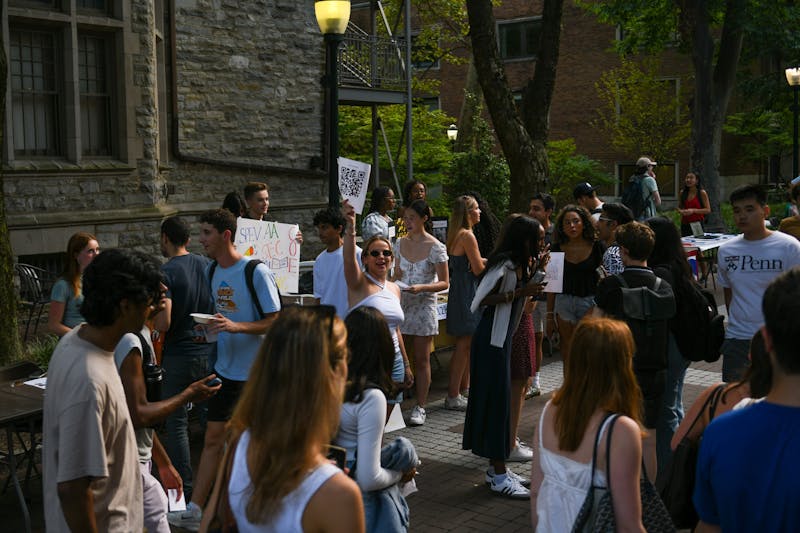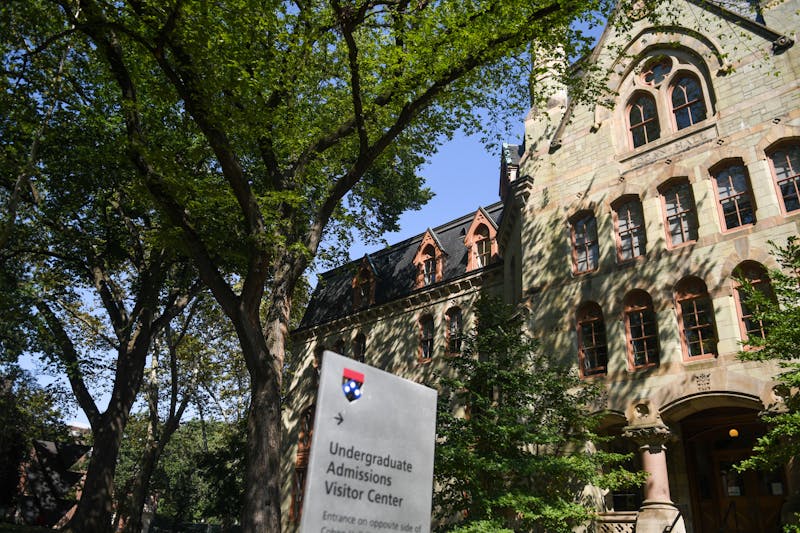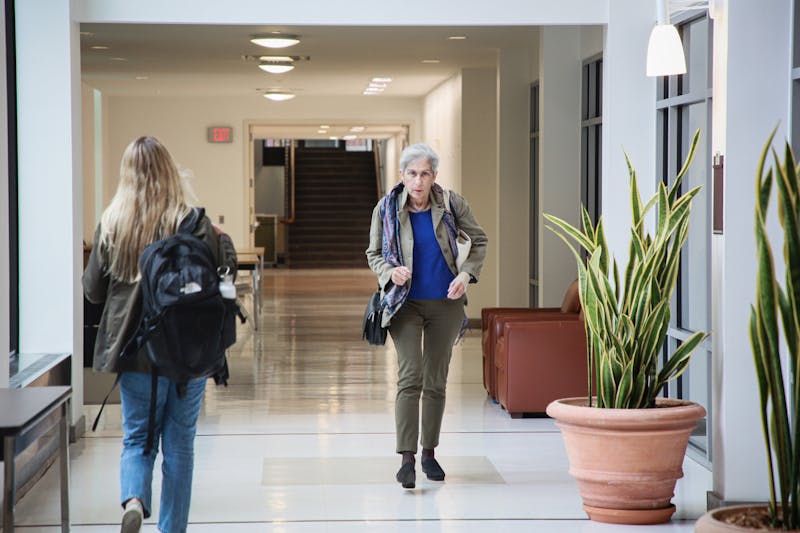
For more than 20 years, the United Minorities Council has played a central role in advocating the concerns of minority students at Penn. The umbrella organization, which represents 15 minority-interest groups, has always maintained a strong commitment to this community.
| About this series Share your experiences Visit the entire series |
Traditionally, the UMC has served as the main minority voice on campus. Over time, as the minority presence at Penn has expanded and its needs and interests have diversified, the role of the UMC has changed. Even its leaders admit that the organization's role is changing. There are now individual African-American, Asian-American and Latino coalitions on campus. And many of their constituent groups feel that the more specific organizations can be more effective than the UMC in representing their needs. Still, a misconception persists, especially among the administration, that the UMC is the definitive minority voice. "There's this perception that we speak for everybody," said UMC chair Jerome Byam. "And we don't."
Origins
The UMC was put together in one night by then-College student Sheryl George-McAlpine who was also the president of the Black Student League at the time. In March of 1978, a large student rally protesting University budget cuts turned into a sit-in at College Hall. George-McAlpine, trying to reinvigorate the BSL, led the group in protest at the Franklin Building in a show of support for the other student demonstrators. College officials, however, told George-McAlpine that as the head of the BSL she did not speak for all minorities and that her cause had little weight. "There were crucial things happening [at that time]," explained Karlene Burell-McRae, the associate director of the Greenfield Intercultural Center and UMC co-advisor. "The University wanted there to be one voice." So George-McAlpine acted fast. "I am the president of the BSL and the president of the United Minorities Council," she informed University officials the day after receiving their criticism. "I do represent all minority students." The UMC works with the administration and other student political groups, lobbying for minority causes and trying to raise awareness about a wide range of issues. "Back in the day when the UMC was formed, it was a meeting of the three sections -- Black, Asian and Latino," said Randy Quezada said, a College senior. But that is no longer the case.
Breaking apart
Today these three sections are not as closely linked through the UMC. In the spring of 1998, La Assiciacion Cultural de Estudiantes Latino Americanos (ACELA) and El Movimiento Estudiantil Chicano de Aztlan (MEChA), which were the Latino voices in the UMC, suddenly pulled out of the organization, citing a lack of political focus. They then decided to keep membership only in the Latino Coalition -- an umbrella group for Latino interests. "Our needs weren't being met," College junior and ACELA president Esmeralda Serrano said. "We felt ignored." Quezada explained that while the Latino Coalition generally gets along well with the UMC, she doesn't think Latino organizations will ever rejoin it. "[We] absolutely are not rejoining the UMC," he said. "There's no room for a Latino voice." And the Latino community feels like it has been doing a good job on its own making its voice heard, citing the opening last fall of La Casa Latina, a resource center for Latino students.
Further expansion
Just as the Latino Coalition provides a more focused base for Latino groups, so do two other minority coalitions. Over the last 10 years, the Asian Pacific Student Coalition and UMOJA -- which represent Asian and African-American interests respectively -- have formed and taken up active roles on campus. Many individual student groups are members of both the UMC and either ASPC or UMOJA. Members say the different umbrella organizations fulfill different needs. The ASPC and UMOJA are more focused on their specific minority interests, while the UMC tries to take on broader issues. Four black student groups are a part of UMOJA and the UMC. "The UMC is different than being a part of UMOJA because it bonds together different minority groups. UMOJA is just a way to bond everyone [in the black community] together," said College junior Jason Shipp, the BSL's UMC representative. And the four black organizations first turn to UMOJA with their issues before going to the UMC. Founded in the fall of 1995, the APSC works on issues facing Penn's Asian Pacific community. College junior Kim Nguyen, president of the Vietnamese Students Association, explained that as her group focuses on internal issues it has limited its role in the UMC. "APSC is more geared to what we need," she explained.
Looking to the future
Although other groups have begun to establish themselves on campus, the UMC remains the most powerful minority group at Penn. And that status is slow in changing. In part just because it is the oldest, the UMC is the organization that the administration typically turns to for minority feedback. And Byam is called upon all too often to be the representative for all of Penn's minority students. "The UMC is not the voice of all people of color on this campus," said Kimberly Noble, the UMOJA political action and research committee coordinator. With the opening of La Casa and the Pan-Asian American Community House, administrative contact and support with these coalitions is gradually increasing. But contact for these groups continues to be largely student initiated and direct interaction with University President Rodin is primarily limited to more social functions, such as the grand opening of PAACH. In contrast, Rodin has been having regular meetings with UMC representatives for the past two years. Provost Robert Barchi said that the reason the administration turns to the UMC rather than to the more focused coalitions is that "the UMC is designated as a representative body." But he acknowledged the body's lack of Latinos makes that difficult.
The Daily Pennsylvanian is an independent, student-run newspaper. Please consider making a donation to support the coverage that shapes the University. Your generosity ensures a future of strong journalism at Penn.
DonatePlease note All comments are eligible for publication in The Daily Pennsylvanian.







